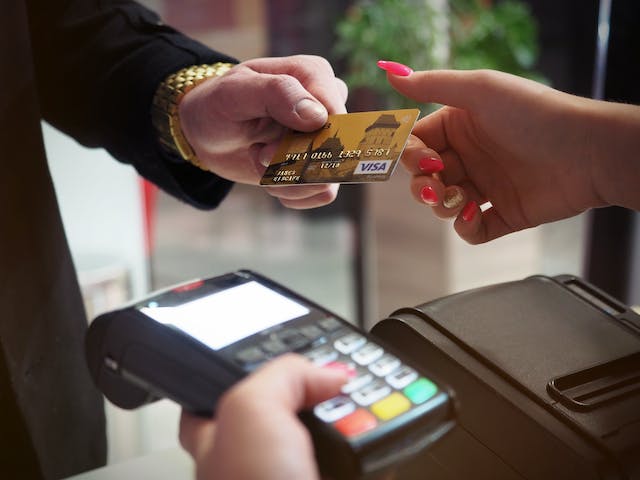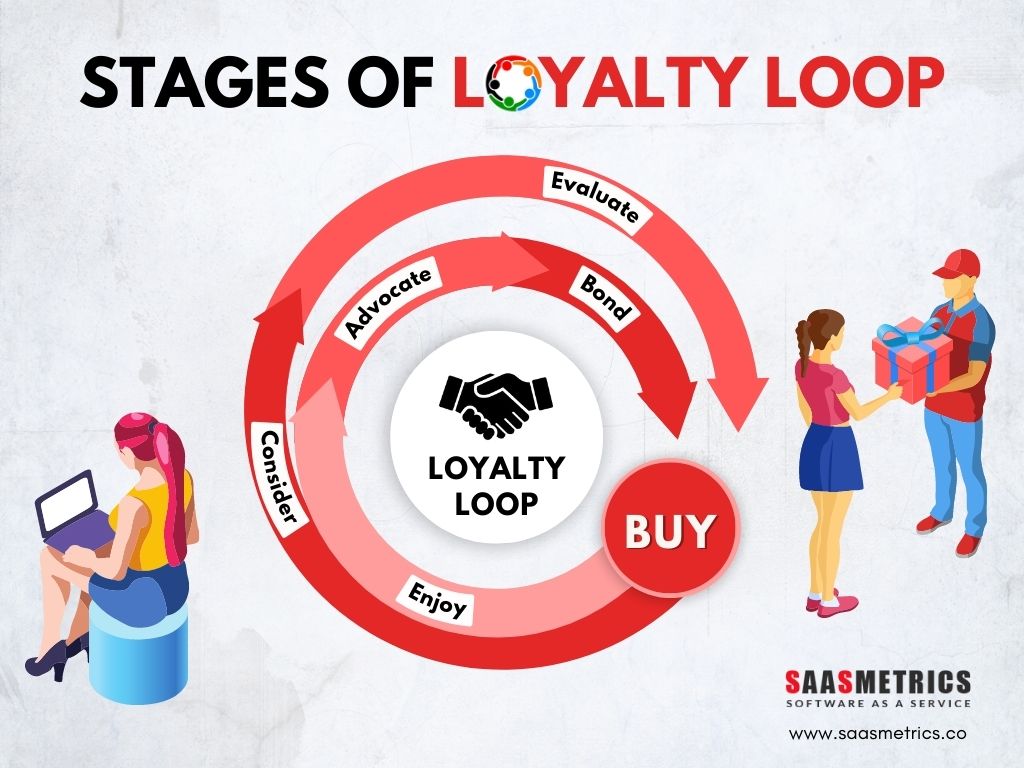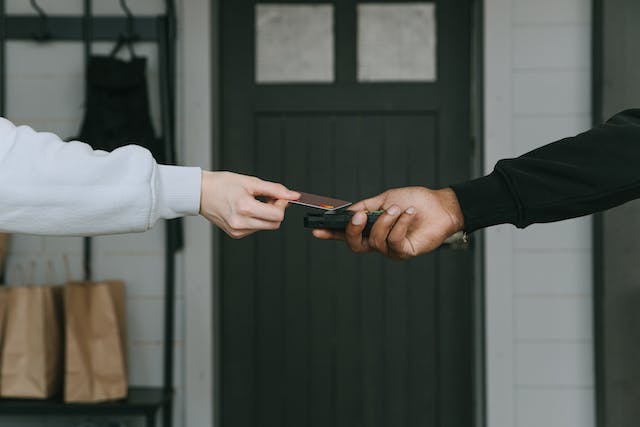In business, loyalty is often defined as a relationship between a customer and a brand. Most businesses aim to develop and maintain loyal customers who continue buying their products or services over time. A customer who buys from the same company repeatedly over time can be considered loyal to that company.
A customer loyalty loop helps you track how customers interact with a business. It is particularly useful in today’s retail environment, where businesses need to explore more innovative ways to increase customer engagement and loyalty.
What is Loyalty Loop?
The customer loyalty loop is a concept that describes how consumers make repeat purchases from the same company. The model recognizes that once people buy a product, they will tell others about it and may reevaluate whether the brand is worth sticking with.
In order to understand the loyalty loop, it has been divided into six stages. Let us look at those now.
Stages of Loyalty Loop
The Loyalty Loop is a journey of trust and loyalty. It’s not about sales or marketing but rather the process of providing value to customers so that they are engaged and willing to receive more from you. This can include anything from discounts and perks to community engagement and learning experiences.
At each stage in the loop, you must continue to provide things that will help your customers develop a greater sense of trust in your brand.
Stage 1: Consider
During this stage, a customer weighs their options for making a purchase. They may start by researching competing brands to find the one that best meets their needs.
Stage 2: Evaluate
At the evaluation stage, the customer considers whether or not to buy. He may search for reviews of the product, ask friends about it, or consult retailers. If satisfied with his findings, he would then move to the next stage.
Stage 3: Buy
After evaluating a product or service and deciding to make a purchase, customers finally buy it in the third stage of the loyalty loop.
Stage 4: Enjoy
In the fourth stage of the loyalty loop, consumers enjoy their positive experiences and may repurchase from the same brand. They may do so for any number of reasons: the customer service was proactive, the website was easy to navigate and responsive, or the product was high quality for its cost (more value for money).
Stage 5: Advocate
The fifth stage of the loop is when the customer becomes loyal to your product or service, and there is a chance that they will become brand advocates.
Some brand advocates will also post positive reviews on social media, further increasing the reach of your promotional content. These advocates are typically repeat customers who continue to patronize your brand.
Stage 6: Bond
Companies use the sixth and final stage of the loyalty loop to ensure customer loyalty, which involves bonding with a customer. Customers will bond with a brand when everything is going well, and there are no doubts about the brand’s reliability. A strong bond between customers and a company is something that will last forever.
Loyalty Loop vs. Marketing Funnel
The difference between the two is that a marketing funnel typically focuses on getting new customers, while a loyalty loop aims to retain and engage existing customers.
A loyalty loop is a process of rewarding your most loyal customers with perks, discounts, and exclusive offers. It’s based on the premise that if you treat your best customers well enough, they will stay loyal to you. The goal is to build customer value by giving them incentives for using your product or service regularly over time until they become completely dependent upon it—and then charge them more money than they are worth!
Benefits of Loyalty Loop
Following are the top benefits of the loyalty loop:
- This approach generates awareness and builds relationships among your target audience, but it also makes for a compelling story that can be shared online. When you have this in place, you won’t have to work hard to turn prospects into loyal brand advocates – which is the purpose of all marketing efforts.
- The customer life cycle loop is a tool that allows managers to gauge customers’ progress through the process. Managers can assess whether a given customer is considering, evaluating, or buying without getting confused.
How to Build Loyalty Loop?
In the Loyalty Loop, you will define and prioritize your customer’s pain points. You will also discover what makes them loyal to you and how you can use that loyalty to increase customer retention.
In order to build a sustainable business, it’s important for your marketing strategy to be built on a solid foundation of loyal customers who trust your brand and are willing to come back again and again.
Here are some steps you can take to make it work:
1. Learn More about Your Customers’ Expectations
A relationship with a customer is a two-way street, so take the time to do some research. For example, what motivates your customers to buy from you? Knowing this will tell you what you need to make the next sale.
2. Design the Loop
Once you understand what drives your customers’ purchasing decisions, you can begin to design an appropriate customer journey. You can design the loop that will lead them back to your brand time and time again.
3. Invest in the Honeymoon Phase
The honeymoon phase is the most critical one – it is the period after they have purchased anything from you, and everything looks exciting in the beginning. The best way to make them your loyal customers is by investing in this post-purchase phase.
This phase requires all the departments (Marketing, Sales, Product Development, as well as Logistics) to shake hands, so the customer doesn’t find any shortcomings in your product.
4. Ask your customers to give you an Honest Feedback
After a customer purchases a product, it is important to continue engaging with that customer. By participating in their lives via social media and automated email marketing (e.g., newsletters), you can ask them for opinions on new products, share experiences they might like to hear about, and get them excited about future products. This type of interaction can help retain customers over time.
5. Incentives for Loyalty
It is not necessary to rely solely on talks when building a relationship with your customers. You can provide special discounts and other incentives to build loyalty and encourage customers to return.
Conclusion
Loyalty Loop is more than just a fancy name for a funnel. It’s an all-inclusive framework that helps you understand how customers purchase products, their reasons for doing so, and their loyalty to your brand. By using this model as a reference, you can identify where improvements are needed to retain more customers in the long run.



